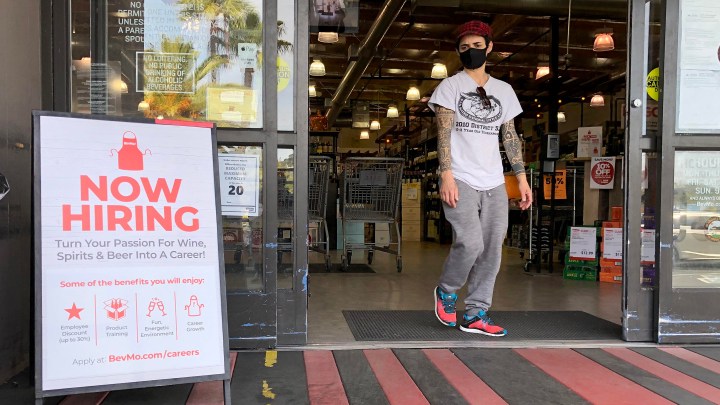
Unemployment claims hit lowest level since pandemic

The number of Americans applying for unemployment benefits tumbled last week to 576,000, a post-COVID low and a hopeful sign that layoffs are easing as the economy recovers from the pandemic recession.
The Labor Department said Thursday that applications plummeted by 193,000 from a revised 769,000 a week earlier. Jobless claims are now down sharply from a peak of 900,000 in early January.
For the week ending March 27, 16.9 million people were continuing to collect jobless benefits, down from 18.2 million in the previous week. Those figures make clear that even as the economy has strengthened in recent weeks, millions are facing a loss of a job or income and have been struggling to pay bills or rent.
The drop in claims comes after employers adding 916,000 jobs in March, the most since August, in a sign that a sustained recovery is taking hold as vaccinations accelerate, pandemic business restrictions are lifted in many states and Americans appear increasingly willing to travel, shop, eat out and otherwise spend again. The unemployment rate fell to 6%, from 6.2%, less than half the pandemic peak of nearly 15%.
The nation’s unemployment rate has declined steadily, from a high of 14.8% a year ago to 6%. The last time the jobless rate was this low, weekly claims were around 350,000, still well below their current level.
Economists point to a range of potential explanations for the discrepancy. For one thing, many states are still struggling to clear backlogs of applications from previous weeks. As a result, jobless claims being reported now may stem from layoffs that occurred weeks ago. Some states are also facing what they suspect is a sizable number of fraudulent claims for unemployment aid.
Another possible factor is that under President Joe Biden’s $1.9 trillion rescue package, the federal government is now supplementing weekly jobless benefits by $300 a week — on top of the average state unemployment payment of about $340 — through September. That extra money may be encouraging more people to request unemployment aid.
Still, not all unemployment applications are approved. The government reports each week on how many people have applied for aid — but not how many have actually received it. Claims are rejected if the applicants hadn’t earned enough money to qualify or had been fired or quit their jobs. Unemployment aid is intended for people who have been laid off through no fault of their own.
Most analysts have grown bullish about the economy’s prospects for the coming months. They include Federal Reserve Chair
Jerome Powell, who expressed his belief in an appearance last Sunday on “60 Minutes” that the economy is at “an inflection point” appears poised for a boom.
“We feel like we’re at a place where the economy’s about to start growing much more quickly and job creation coming in much more quickly,” Powell said. “This growth that we’re expecting in the second half of this year is going to be very strong. And job creation, I would expect to be very strong.”
Many economists, in fact, are concerned more about a potential burst of inflation stemming from the unleashing of pent-up consumer demand. Prices for lumber, copper, oil and other raw materials have already risen as demand for gas, homes and electronic equipment has jumped.
Consumer prices rose 0.6% in March, the most since 2012, the government reported Tuesday, and are up 2.6% in the past year. Excluding the volatile food and energy categories, though, prices rose by a more benign 1.6% year over year.
Powell has said that while inflation will likely pick up in the coming months, the price increases will probably ease as the pandemic-induced disruptions in many industries’ supply chains are worked out.
There’s a lot happening in the world. Through it all, Marketplace is here for you.
You rely on Marketplace to break down the world’s events and tell you how it affects you in a fact-based, approachable way. We rely on your financial support to keep making that possible.
Your donation today powers the independent journalism that you rely on. For just $5/month, you can help sustain Marketplace so we can keep reporting on the things that matter to you.












